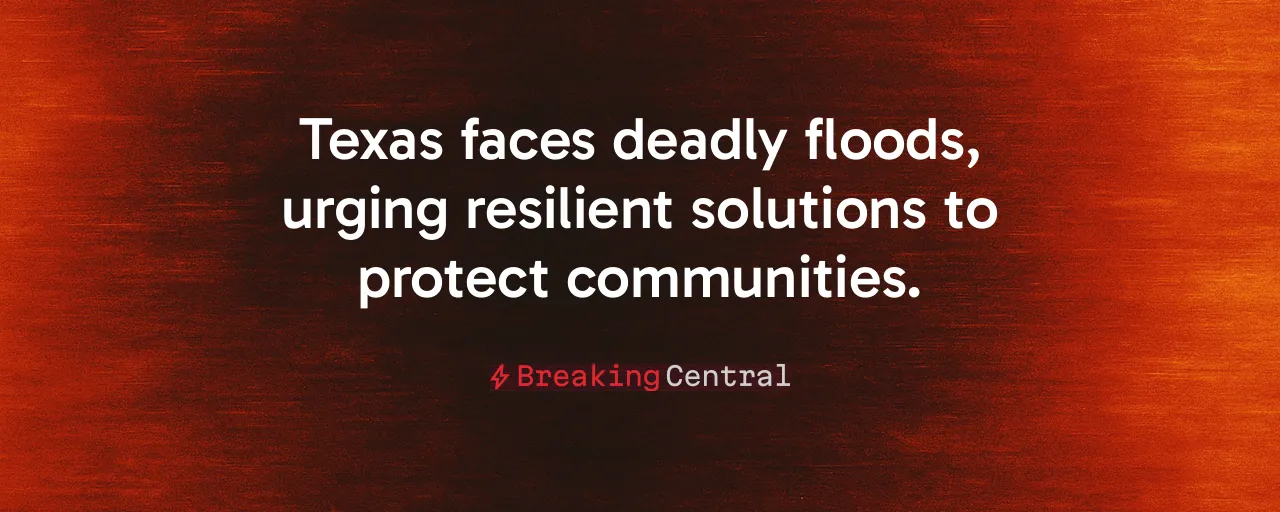A State in Mourning
Texas is reeling from the catastrophic Hill Country floods that claimed at least 118 lives over the July 4th weekend. Governor Greg Abbott ordered flags across the state lowered to half-staff, a solemn gesture to honor the fallen. The disaster, marked by a 26-foot surge in the Guadalupe River, left communities shattered and families searching for answers. This tragedy, the deadliest non-hurricane flood in Texas history, evokes deep grief and calls for action rooted in strength and unity.
The governor's call for a Day of Prayer reflects a deep tradition of turning to faith in times of crisis. From small-town churches to urban congregations, Texans are uniting to support those who lost loved ones, homes, and livelihoods. As the state mourns, a critical question emerges: how can Texas protect its people from future devastation while staying true to its values of independence and community?
The focus lies in practical steps, grounded in local know-how and a commitment to safeguarding lives. The floods exposed vulnerabilities and revealed the resilience of first responders and volunteers who embody the Texas spirit. Their efforts set the stage for a recovery that balances immediate needs with long-term security.
First Responders Lead the Way
When the waters rose, over 1,000 state responders sprang into action. Texas Task Force 1, alongside the National Guard and local fire departments, navigated treacherous conditions to rescue stranded families and recover the missing. The State Operations Center, activated at Level II, coordinated a seamless response, proving the value of preparedness and mutual-aid agreements forged long before the rains came.
These heroes, many of them volunteers, worked tirelessly, often at great personal risk. Their success stems from a system that empowers local agencies while leveraging state resources. This decentralized approach, a hallmark of Texas governance, ensures communities closest to the crisis lead the charge, free from bureaucratic delays.
Historical tragedies, like the 2017 Hurricane Harvey response, show this model works. Then, as now, faith-based groups played a vital role, delivering meals, clearing debris, and offering shelter. Strengthening these networks keeps recovery efforts grounded in the needs of real Texans, aligning with the state's preference for local control.
Building Smarter Infrastructure
The floods' $6 billion in damages underscore the need for targeted infrastructure upgrades. Peer-reviewed studies confirm that every dollar spent on mitigation saves four to seven dollars in recovery costs. Texas can prioritize flood-control projects, like reinforced levees and advanced river gauges, ensuring solutions are effective and do not burden landowners with sweeping regulatory overhauls.
Private property rights remain a cornerstone of the state's identity. Voluntary buyouts for high-risk properties, paired with insurance incentives for flood-proofing homes, offer practical solutions. These measures respect individual freedom while reducing future risks. The 1998 Central Texas floods prompted similar localized efforts, which cut losses in subsequent storms.
Businesses, too, have a stake. The tourism industry, vital to Hill Country towns, faces setbacks from washed-out camps and riverfront shops. State-led grants can help small businesses rebuild stronger, ensuring economic stability and promoting self-reliance through local initiatives.
Guarding Against Overreach
As recovery unfolds, Texas navigates federal involvement carefully. The Stafford Act governs cost-sharing with agencies like FEMA. Past disasters show the risk of strings attached. Overzealous land-use rules or environmental mandates could stifle local innovation and infringe on property rights, a concern echoed after the 2015 Memorial Day floods.
Taxpayers deserve a balanced approach. The state's rainy-day fund, built for crises like this, can cover immediate needs while maintaining fiscal responsibility. Bipartisan support exists for practical measures, like upgrading early-warning systems, which saved lives during the 2017 Harvey response. These steps keep control in Texas hands.
A Unified Path Ahead
The Hill Country floods tested Texas and revealed its strength. From first responders to faith-based volunteers, the response reflects a commitment to community and self-reliance. Moving forward, the state can honor the 118 lives lost by investing in smarter infrastructure and empowering local solutions.
This tragedy is a call to action, advocating for thoughtful governance and community-led solutions. By blending targeted flood defenses with the power of private initiative and public prayer, Texas can emerge stronger. The resilience shown in past crises, from the 1921 San Antonio flood to Hurricane Harvey, proves the state's capacity to rebuild on its own terms.
As flags return to full-staff on July 14, Texans will carry forward a shared resolve: to protect their communities, preserve their freedoms, and honor those lost by building a future that withstands the next storm.
